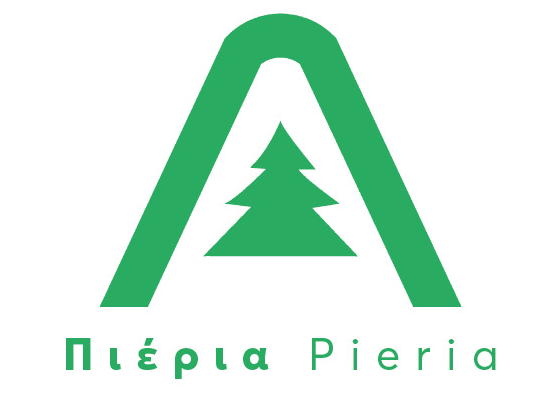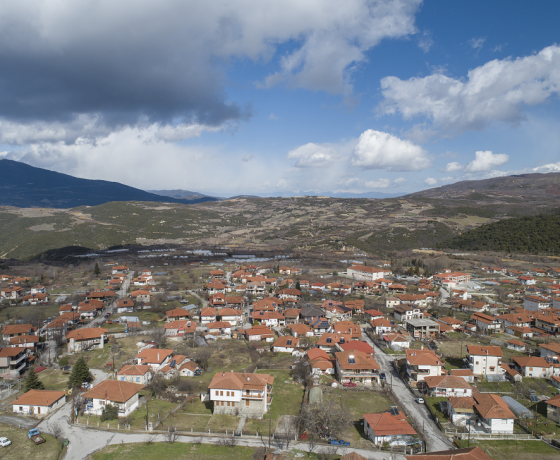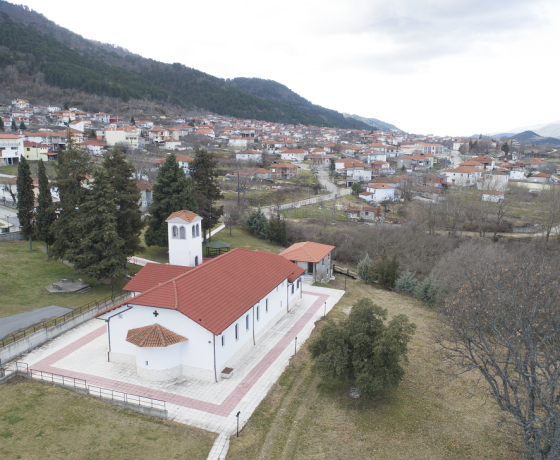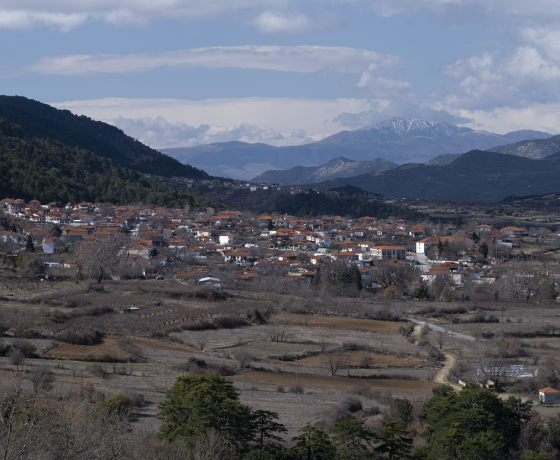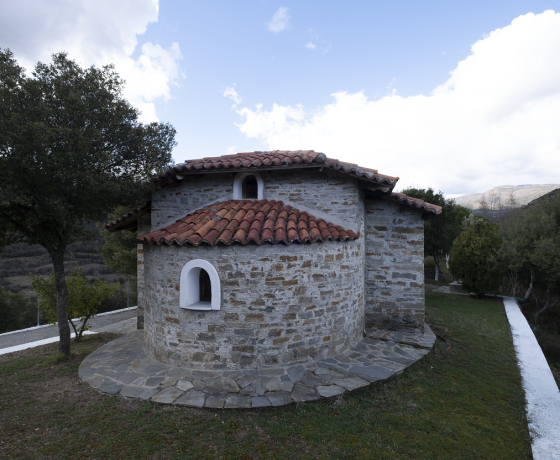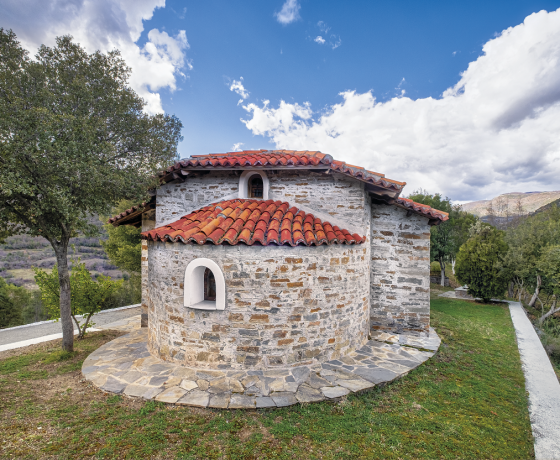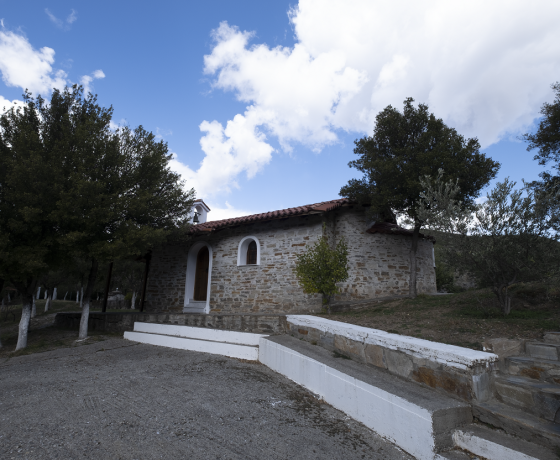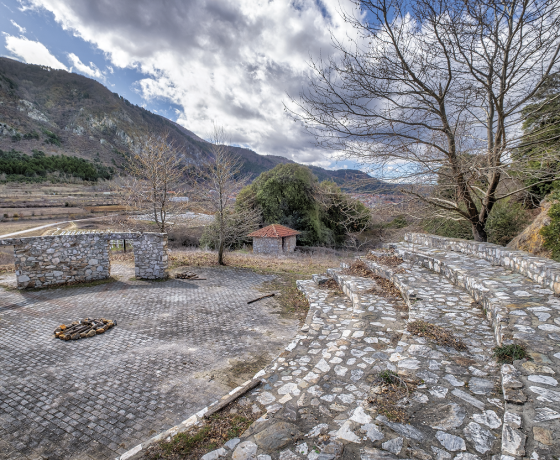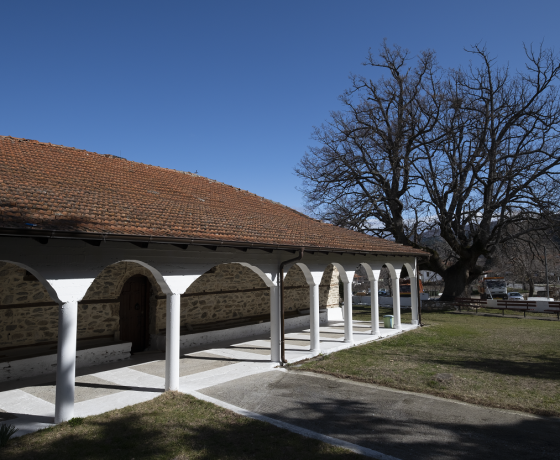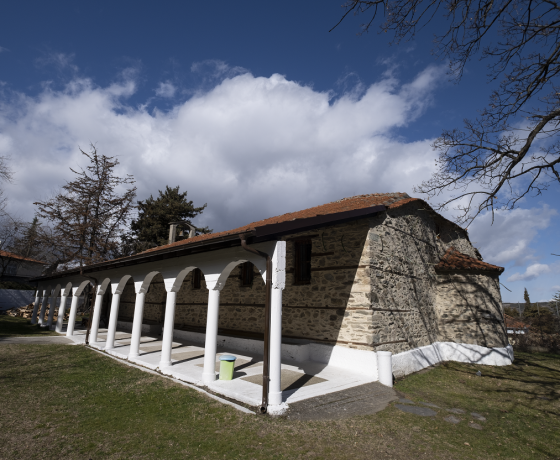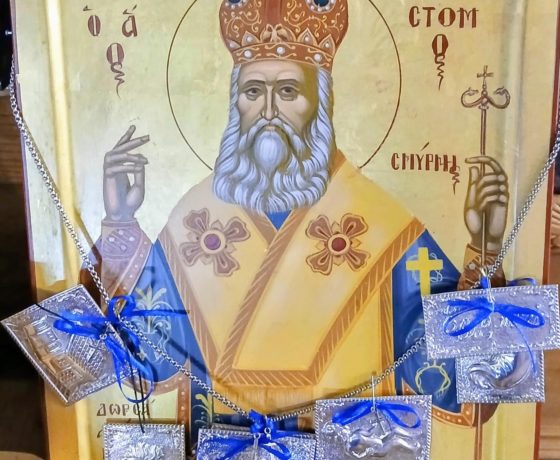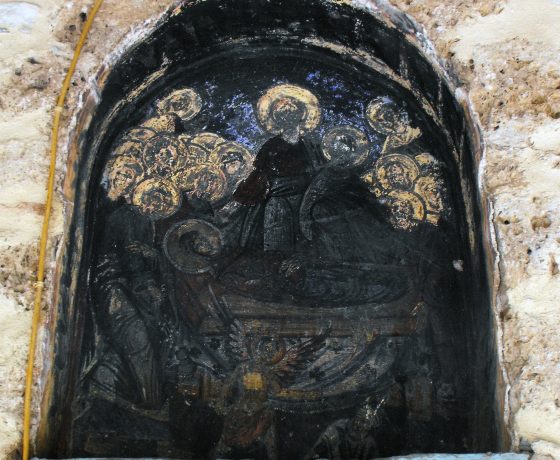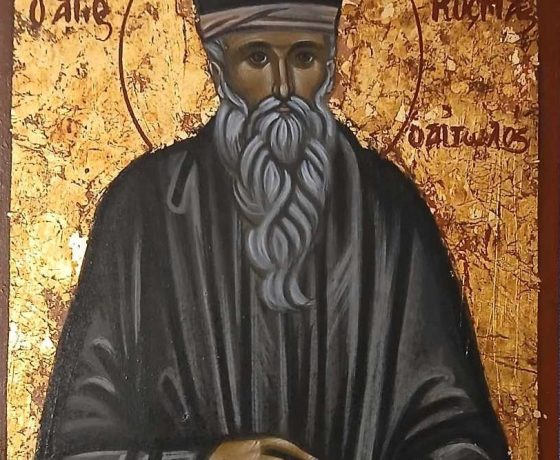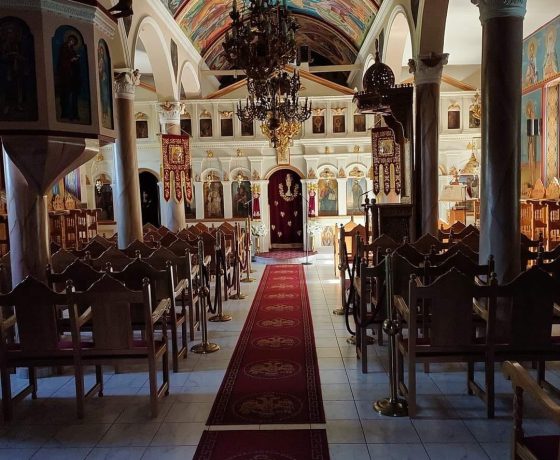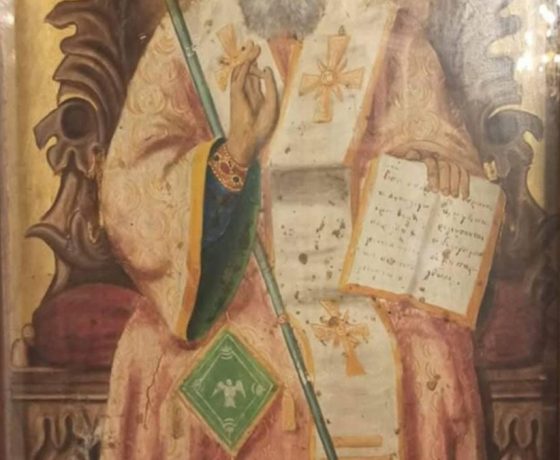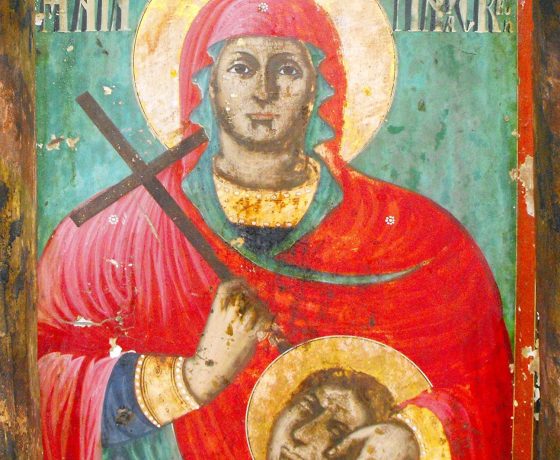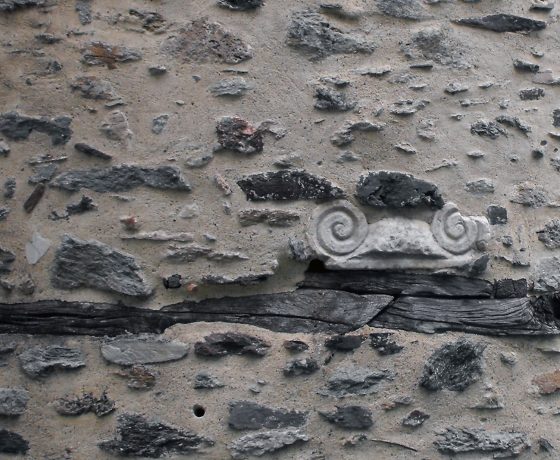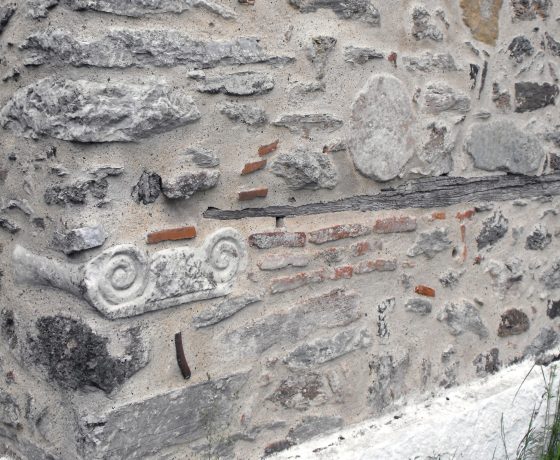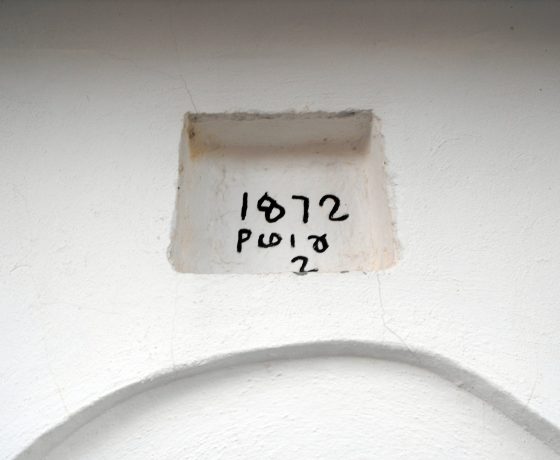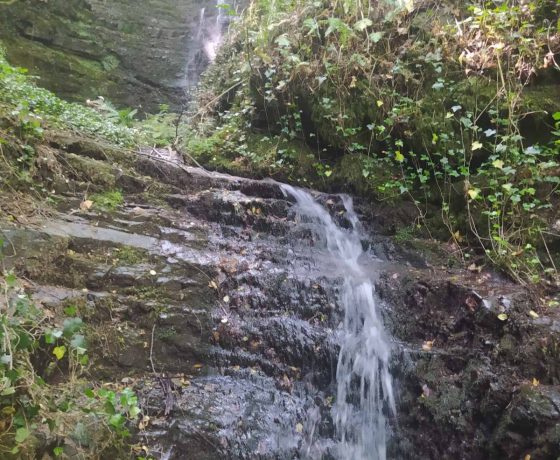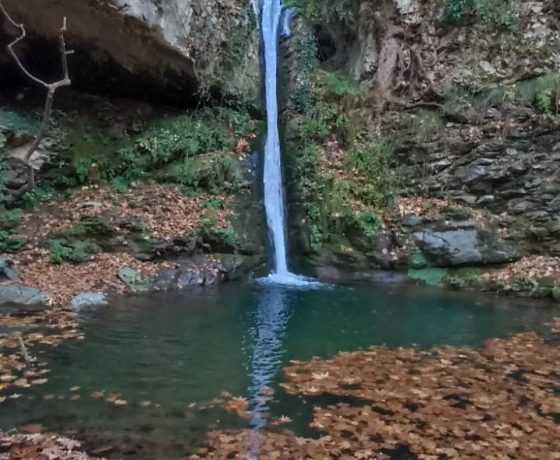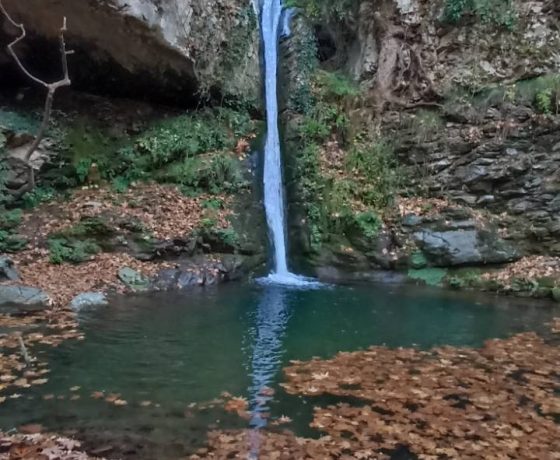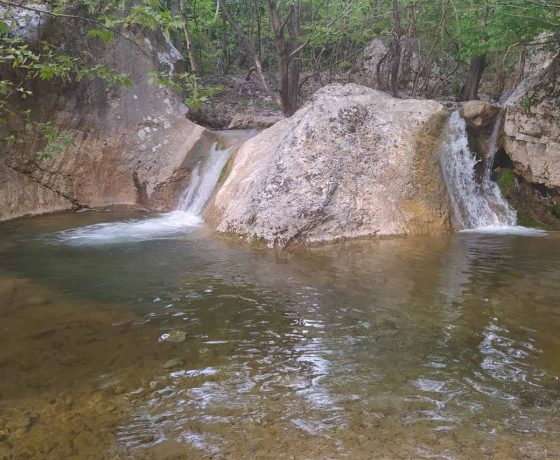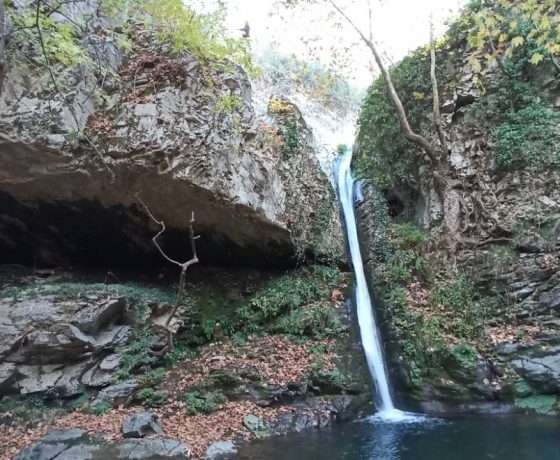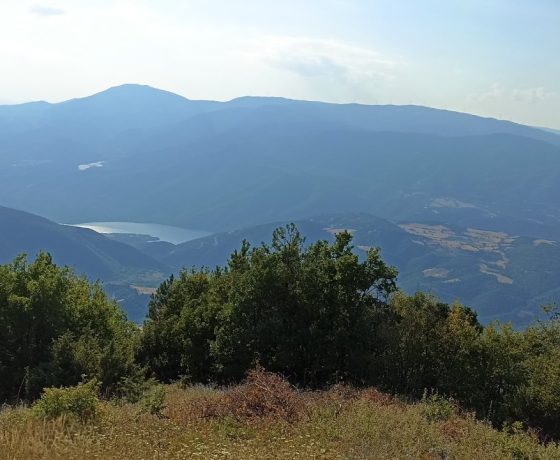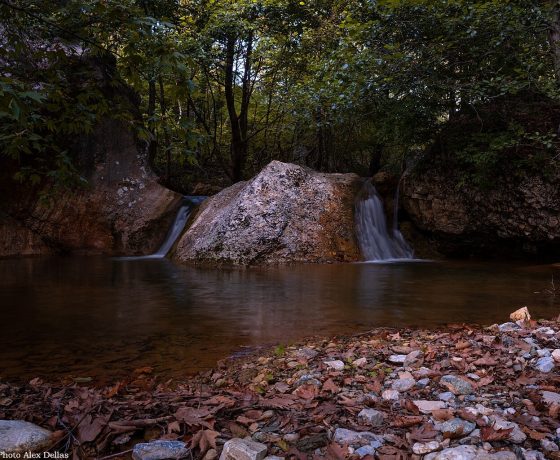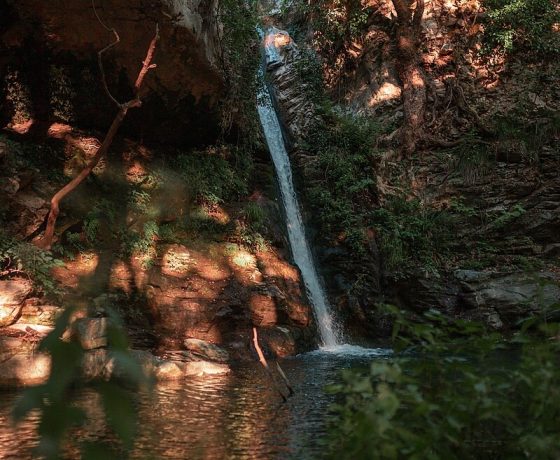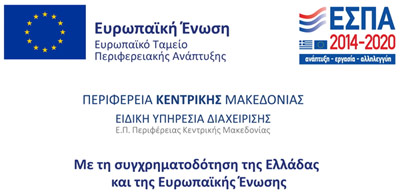France
Rizomata
Rizomata
The village is located about 37 kilometers south of Veria, on the western slopes of the Pieria Mountains, at an altitude of 600m. Its old name was “Bostani”. From the top of the rock of Rizomata the visitor can enjoy the view of the beautiful village as well as the wonderful landscape offered by Mountain Vermio and Pieria Mountains..
The famous tomato of the village of Rizomata
In the village of Rizomata but also in all the Pieria Mountains, the famous tomato “Rizomaton” is cultivated, the most delicious tomato in Greece. Tomato cultivation is the main crop grown in the area when farmers gradually gave up tobacco and turned to tomato cultivation..
In the village of Rizomata but also in all the Pieria Mountains, the famous tomato “Rizomaton” is cultivated, the most delicious tomato in Greece. Tomato cultivation is the main crop grown in the area when farmers gradually gave up tobacco and turned to tomato cultivation..
Worth to visit
The Natural Heritage Monument of “Paleokastro”
The Natural Heritage Monument of “Paleokastro”. A Natural Monument with great fame the natural heritage monument of “Paleokastro» which is located behind a small hill. The endless greenery and the view of the plain on one side, in contrast to the blue of the sky that seems to embrace the mountain on the other side, it drives you back to other times. In this area, a small Theater is housed, where it has to show many and remarkable events.
. .
The Natural Heritage Monument of “Paleokastro”. A Natural Monument with great fame the natural heritage monument of “Paleokastro» which is located behind a small hill. The endless greenery and the view of the plain on one side, in contrast to the blue of the sky that seems to embrace the mountain on the other side, it drives you back to other times. In this area, a small Theater is housed, where it has to show many and remarkable events.
. .
The Church of Saint David of Euboea and Saint Anna.
The church of Saint David of Euboea and Saint Anna is the newest church in Rizomata, built in the 2000s. It is a single-room church with a gable roof, and a small peristyle on the western side. The area was known as “Palikklisi” (=old church), probably due to the existence of an older church there. It was also called “Prodromos”, after the old small stone chapel that was built in the area and dedicated to Saint John the Baptist. This was possibly a succursal of the Monastery of Saint John the Baptist in Skete, Veria. This is because, around 1925, a man named Giannis Vainas discovered an icon of the Baptist, either after a dream or while a goat was digging with its foot in the area. He took the icon home, but Saint John the Baptist appeared to him in a dream, asking him to return it to the place where it was found, which he did. Every year, at the beginning of September, the relic of Saint David the Elder from Euboea is brought to the church. Many pilgrims from the surrounding areas come to pay their respect.
Information: https://rizwmata.blogspot.com/2015/02/blog-post.html
Written by: Alexandros Vouvoulis.
Translation: Alexandros Vouvoulis, Alexandros Laftsidis.
The church of Saint David of Euboea and Saint Anna is the newest church in Rizomata, built in the 2000s. It is a single-room church with a gable roof, and a small peristyle on the western side. The area was known as “Palikklisi” (=old church), probably due to the existence of an older church there. It was also called “Prodromos”, after the old small stone chapel that was built in the area and dedicated to Saint John the Baptist. This was possibly a succursal of the Monastery of Saint John the Baptist in Skete, Veria. This is because, around 1925, a man named Giannis Vainas discovered an icon of the Baptist, either after a dream or while a goat was digging with its foot in the area. He took the icon home, but Saint John the Baptist appeared to him in a dream, asking him to return it to the place where it was found, which he did. Every year, at the beginning of September, the relic of Saint David the Elder from Euboea is brought to the church. Many pilgrims from the surrounding areas come to pay their respect.
Information: https://rizwmata.blogspot.com/2015/02/blog-post.html
Written by: Alexandros Vouvoulis.
Translation: Alexandros Vouvoulis, Alexandros Laftsidis.
The Church of the Dormition of Theotokos, Mother of God, in Rizomata.
The church, in its current form, dates back to the 19th century and is a three-aisled, wooden-roofed basilica with a gable roof, featuring blank cuttings on both the eastern and western sides and a peristyle on the southern side. The apse of the church is off-centre, likely due to later alterations, while there is a narthex with a women’s quarters on the upper floor of the west side. Older phases dating to the 17th–18th centuries are visible, and Ionian capitals from either the early Christian or the Middle Byzantine eras are embedded in the walls, likely from an earlier building phase. Partly-preserved frescoes can be seen on the interior northern wall, which depict scenes from the Passion of Christ and busts of Saints. The Annunciation of Virgin Mary, prophets, and the Extreme Humility are depicted in the northeast corner of the Sanctuary. The stone-made iconostasis was built in 1966, replacing an older wooden one from the 17th or 19th century, as indicated by the images it features. The Church of the Virgin Mary is the parish church of the settlement, a significant place of worship for the locals and an important monument in the area. All the festivals concerning the Mother of God are celebrated here, culminating with the festival of the Dormition of Theotokos on August 15th, on a day the church itself celebrates.
Bibliography: Tsilipakou, A. The Church of the Virgin Mary in Rizomata, Imathia”, Cultural Events 32.
Written by: Alexandros Vouvoulis
Translation: Alexandros Vouvoulis, Alexandros Laftsidis.
The church, in its current form, dates back to the 19th century and is a three-aisled, wooden-roofed basilica with a gable roof, featuring blank cuttings on both the eastern and western sides and a peristyle on the southern side. The apse of the church is off-centre, likely due to later alterations, while there is a narthex with a women’s quarters on the upper floor of the west side. Older phases dating to the 17th–18th centuries are visible, and Ionian capitals from either the early Christian or the Middle Byzantine eras are embedded in the walls, likely from an earlier building phase. Partly-preserved frescoes can be seen on the interior northern wall, which depict scenes from the Passion of Christ and busts of Saints. The Annunciation of Virgin Mary, prophets, and the Extreme Humility are depicted in the northeast corner of the Sanctuary. The stone-made iconostasis was built in 1966, replacing an older wooden one from the 17th or 19th century, as indicated by the images it features. The Church of the Virgin Mary is the parish church of the settlement, a significant place of worship for the locals and an important monument in the area. All the festivals concerning the Mother of God are celebrated here, culminating with the festival of the Dormition of Theotokos on August 15th, on a day the church itself celebrates.
Bibliography: Tsilipakou, A. The Church of the Virgin Mary in Rizomata, Imathia”, Cultural Events 32.
Written by: Alexandros Vouvoulis
Translation: Alexandros Vouvoulis, Alexandros Laftsidis.
The Church of Saint Athanasius in Rizomata.
The church is located almost at the entrance of the modern settlement, and was built in the early 20th century (1916, according to a marble inscription on the external face of the apse of the Sanctuary), with financial contributions from young people, who migrated to U.S.A. between 1911 and 1915, and through the personal labor of all the locals. It is a three-aisled basilica with a gable roof and blank cuttings on both the eastern and western sides of the main building. A narthex was recently added to the west, as well as a structure to the south meant to serve the needs of the church. The bell tower is located at the southwest corner of the church. The church replaced an older, smaller one, for which very little information is known. The existing church has wooden columns covered with plaster to imitate stone columns. The iconostasis is made of stone, featuring strong neoclassical elements (wave patterns, pilasters, triangular pediment, etc.), as well as sculpted representations of young angels, which are also found on the capitals of the columns. The interior decoration was done in 1919 by Anastasios Tsitsirikis, with the help of Antonios Fkiaras or Karagiannis and Antonios Bachtsis. Of the icons, four are – according to the teacher Koutsantas – works of Nikolaos Zografos from Veria, and the others were made by Ioannis Vitkos from Tsaritsani, Thessaly. The church is fully painted, with frescoes on almost all the interior surfaces. They depict scenes from the Gospel and figures of saints, which date from the late 20th to the early 21st century. The frescoes of the six Apostles, depicted in nearly triangular frames, date back to the time of the construction of the church and are located between the arches of the columned sections. The church also contains some 19th-century icons, although most of the icons date to the 20th century. Saint Athanasius is the patron saint of Rizomata and is strongly connected with the life of the inhabitants. The miracles of Saint Athanasius, which have recently been documented in books, are numerous, and his fame as a Healer has long surpassed the boundaries of the community, a fact confirmed by the large number of pilgrims attending the two major festivals of the church, on January 18th and May 2nd. In the past, an ill person would stay inside the church for forty days, waiting for Saint Athanasius to come and heal them. Later, they would stay next to the church, in the small building to the west. This practice, deeply rooted in tradition, recalls the sleeping chambers in the ancient Asclepius sanctuaries. The church of Saint Athanasius holds fragments of sacred relics from Saint Parthenios, Saint Paraskevi, Saint Modestos, Saint Filoumenos, Saint Constantine of Hydra, and Saint Raphael of Mytilene, as well as an icon of Saint Chrysostomus of Smyrna. They are all exhibited for the visitors to worship.
Written by: Alexandros Vouvoulis
Translation: Alexandros Vouvoulis, Alexandros Laftsidis.
The church is located almost at the entrance of the modern settlement, and was built in the early 20th century (1916, according to a marble inscription on the external face of the apse of the Sanctuary), with financial contributions from young people, who migrated to U.S.A. between 1911 and 1915, and through the personal labor of all the locals. It is a three-aisled basilica with a gable roof and blank cuttings on both the eastern and western sides of the main building. A narthex was recently added to the west, as well as a structure to the south meant to serve the needs of the church. The bell tower is located at the southwest corner of the church. The church replaced an older, smaller one, for which very little information is known. The existing church has wooden columns covered with plaster to imitate stone columns. The iconostasis is made of stone, featuring strong neoclassical elements (wave patterns, pilasters, triangular pediment, etc.), as well as sculpted representations of young angels, which are also found on the capitals of the columns. The interior decoration was done in 1919 by Anastasios Tsitsirikis, with the help of Antonios Fkiaras or Karagiannis and Antonios Bachtsis. Of the icons, four are – according to the teacher Koutsantas – works of Nikolaos Zografos from Veria, and the others were made by Ioannis Vitkos from Tsaritsani, Thessaly. The church is fully painted, with frescoes on almost all the interior surfaces. They depict scenes from the Gospel and figures of saints, which date from the late 20th to the early 21st century. The frescoes of the six Apostles, depicted in nearly triangular frames, date back to the time of the construction of the church and are located between the arches of the columned sections. The church also contains some 19th-century icons, although most of the icons date to the 20th century. Saint Athanasius is the patron saint of Rizomata and is strongly connected with the life of the inhabitants. The miracles of Saint Athanasius, which have recently been documented in books, are numerous, and his fame as a Healer has long surpassed the boundaries of the community, a fact confirmed by the large number of pilgrims attending the two major festivals of the church, on January 18th and May 2nd. In the past, an ill person would stay inside the church for forty days, waiting for Saint Athanasius to come and heal them. Later, they would stay next to the church, in the small building to the west. This practice, deeply rooted in tradition, recalls the sleeping chambers in the ancient Asclepius sanctuaries. The church of Saint Athanasius holds fragments of sacred relics from Saint Parthenios, Saint Paraskevi, Saint Modestos, Saint Filoumenos, Saint Constantine of Hydra, and Saint Raphael of Mytilene, as well as an icon of Saint Chrysostomus of Smyrna. They are all exhibited for the visitors to worship.
Written by: Alexandros Vouvoulis
Translation: Alexandros Vouvoulis, Alexandros Laftsidis.
The Fountain of Holy Water (Agioneri) of Saint Athanasius.
Beneath the temple of Saint Athanasius, in a lush area with overgrown vegetation, lies the Agioneri, the sacred fountain of Saint Athanasius. The water that flows from the spring is believed to have healing properties, and the locals collect it as a blessing. Ribbons or threads were once tied to trees at the Agioneri, with people making wishes, as Evdoxia Margariti informs. This was an old custom found in Greece, Cyprus, and formerly also in Asia Minor. According to the oral testimony of Kalliopi Syropoulou, grandmother of the priest Dionysios Syropoulos, Saint Athanasius the Meteorite had once stayed in a cave near the Agioneri, on his way to Meteora—a story she heard as a child from elderly people.
Written by: Alexandros Vouvoulis
Translation: Alexandros Vouvoulis, Alexandros Laftsidis.
Beneath the temple of Saint Athanasius, in a lush area with overgrown vegetation, lies the Agioneri, the sacred fountain of Saint Athanasius. The water that flows from the spring is believed to have healing properties, and the locals collect it as a blessing. Ribbons or threads were once tied to trees at the Agioneri, with people making wishes, as Evdoxia Margariti informs. This was an old custom found in Greece, Cyprus, and formerly also in Asia Minor. According to the oral testimony of Kalliopi Syropoulou, grandmother of the priest Dionysios Syropoulos, Saint Athanasius the Meteorite had once stayed in a cave near the Agioneri, on his way to Meteora—a story she heard as a child from elderly people.
Written by: Alexandros Vouvoulis
Translation: Alexandros Vouvoulis, Alexandros Laftsidis.
The Paliokastro (=Old Castle).
One of the most imposing natural monuments in our region is also connected to Saint Athanasius: Paliokastro. The entire hill was considered to be under the protection of the Saint, and no one had the right to remove even a single twig from it. There are frequent references over time about his intervention whenever someone attempted to disregard this. This fact significantly contributed to the protection of the local flora, leading to the rare phenomenon of the existence of tall kermes oak trees (many of which exceed 15 meters) of considerable age. This is the reason why the area has been designated by the Ministry of Agriculture as a “Monument of Nature” and is of interest to forest rangers. Recently, a small chapel dedicated to Saint Athanasius was placed next to the open-air theater.
Written by: Alexandros Vouvoulis
Translation: Alexandros Vouvoulis, Alexandros Laftsidis.
One of the most imposing natural monuments in our region is also connected to Saint Athanasius: Paliokastro. The entire hill was considered to be under the protection of the Saint, and no one had the right to remove even a single twig from it. There are frequent references over time about his intervention whenever someone attempted to disregard this. This fact significantly contributed to the protection of the local flora, leading to the rare phenomenon of the existence of tall kermes oak trees (many of which exceed 15 meters) of considerable age. This is the reason why the area has been designated by the Ministry of Agriculture as a “Monument of Nature” and is of interest to forest rangers. Recently, a small chapel dedicated to Saint Athanasius was placed next to the open-air theater.
Written by: Alexandros Vouvoulis
Translation: Alexandros Vouvoulis, Alexandros Laftsidis.
The passage of Saint Kosmas the Aetolian from Rizomata.
Saint Kosmas the Aetolian passed through Rizomata, and more widely through the Pieria region, for the first time around 1775. His memory has stayed particularly vivid in our area, and his doctrines were passed down by the elders to all of us, up until today. The first place where he taught in the village was in the courtyard of the church of Saint Athanasius, under an oak tree, which was preserved up until 2014. At that time it was cut down because it had dried out becoming a safety hazard for the parishioners. The second place where he taught was in the center of the village, at the “m’sohori”, near the current Citizens’ Service Center (KEP). At this spot there was a fountain carrying water from the location of Palio-Platanos (=old plane tree). Here is where he taught.
Several of his doctrines have been preserved in the collective memory:
• “You will see the dead in a box. The wells will be drained. Sixty horses will be tied to one post.” (Testimony of Ioannis Manolopoulos)
• “From there (pointing towards the Vermio mountain, the present-day Egnatia Road, which did not exist at the time), the army will pass on its way to the Constantinople. The villages at the foot of Mount Olympus will not suffer and will be saved. You should have a small bag of wheat hung on your door. When the bad days come and you have to leave quickly, your head will hit the bag and you’ll remember to take it with you. A small bag of wheat will save many people.” (Testimony of Sofia Vouvouli)
Bibliography:
Vlachopoulos, Chr. Historical Book of the Village of Rizomata and the Miracles of its Patron Saint Athanasios, Rizomata, 2008, pp. 102–105.
Porfyrios Prodromitis. Father Kosmas in Pieria, Veria, 2017.
Written by: Alexandros Vouvoulis
Translation: Alexandros Vouvoulis, Alexandros Laftsidis.
Saint Kosmas the Aetolian passed through Rizomata, and more widely through the Pieria region, for the first time around 1775. His memory has stayed particularly vivid in our area, and his doctrines were passed down by the elders to all of us, up until today. The first place where he taught in the village was in the courtyard of the church of Saint Athanasius, under an oak tree, which was preserved up until 2014. At that time it was cut down because it had dried out becoming a safety hazard for the parishioners. The second place where he taught was in the center of the village, at the “m’sohori”, near the current Citizens’ Service Center (KEP). At this spot there was a fountain carrying water from the location of Palio-Platanos (=old plane tree). Here is where he taught.
Several of his doctrines have been preserved in the collective memory:
• “You will see the dead in a box. The wells will be drained. Sixty horses will be tied to one post.” (Testimony of Ioannis Manolopoulos)
• “From there (pointing towards the Vermio mountain, the present-day Egnatia Road, which did not exist at the time), the army will pass on its way to the Constantinople. The villages at the foot of Mount Olympus will not suffer and will be saved. You should have a small bag of wheat hung on your door. When the bad days come and you have to leave quickly, your head will hit the bag and you’ll remember to take it with you. A small bag of wheat will save many people.” (Testimony of Sofia Vouvouli)
Bibliography:
Vlachopoulos, Chr. Historical Book of the Village of Rizomata and the Miracles of its Patron Saint Athanasios, Rizomata, 2008, pp. 102–105.
Porfyrios Prodromitis. Father Kosmas in Pieria, Veria, 2017.
Written by: Alexandros Vouvoulis
Translation: Alexandros Vouvoulis, Alexandros Laftsidis.
The Church of Saint Paraskevi in Rizomata.
The church of Saint Paraskevi is one of the most beloved places of worship among the locals. It is a single-room church with a gable roof and blank cuttings on both the eastern and western sides. The church has two entrances on its southern side, and above the main entrance is a marble plaque featuring the inscription “1872”. It is uncertain whether this inscription refers to the construction or the renovation of the church, although oral tradition suggests that it marks the repair of an older church that was burned down. The iconostasis is wooden, and a vine motif occasionally appears as decoration. Saint Paraskevi is celebrated with great devotion by the locals, and many have reported experiencing her grace and receiving blessings. In the past, people would walk to the church on the eve of her feast for the Vespers service and to spend the night. On the feast day, July 26th, a “kourbani” (=a special offering of food) was made and shared after the Divine Liturgy with everyone present. Each family would sit under a specific tree in the churchyard. Services were also held at the church on the Friday of Easter Week, as well as on the feast of the Life-Giving Spring, a practice that can be found in other parts of Greece.
Written by: Alexandros Vouvoulis
Translation: Alexandros Vouvoulis, Alexandros Laftsidis.
The church of Saint Paraskevi is one of the most beloved places of worship among the locals. It is a single-room church with a gable roof and blank cuttings on both the eastern and western sides. The church has two entrances on its southern side, and above the main entrance is a marble plaque featuring the inscription “1872”. It is uncertain whether this inscription refers to the construction or the renovation of the church, although oral tradition suggests that it marks the repair of an older church that was burned down. The iconostasis is wooden, and a vine motif occasionally appears as decoration. Saint Paraskevi is celebrated with great devotion by the locals, and many have reported experiencing her grace and receiving blessings. In the past, people would walk to the church on the eve of her feast for the Vespers service and to spend the night. On the feast day, July 26th, a “kourbani” (=a special offering of food) was made and shared after the Divine Liturgy with everyone present. Each family would sit under a specific tree in the churchyard. Services were also held at the church on the Friday of Easter Week, as well as on the feast of the Life-Giving Spring, a practice that can be found in other parts of Greece.
Written by: Alexandros Vouvoulis
Translation: Alexandros Vouvoulis, Alexandros Laftsidis.
The Church of Prophet Elias in Rizomata.
The church of Prophet Elias was built in 1988 in the area of “Ailiades,” on the road between Rizomata and Elatochori. It is a three-aisled basilica with a gable roof and blank cuttings on both the eastern and western sides. The toponym, combined with the marble parapet found near the church and now kept in the church of the Virgin Mary, suggests that there was likely an older temple in the area dedicated to Prophet Elias. The church celebrates on July 20th.
Written by: Alexandros Vouvoulis
Translation: Alexandros Vouvoulis, Alexandros Laftsidis.
The church of Prophet Elias was built in 1988 in the area of “Ailiades,” on the road between Rizomata and Elatochori. It is a three-aisled basilica with a gable roof and blank cuttings on both the eastern and western sides. The toponym, combined with the marble parapet found near the church and now kept in the church of the Virgin Mary, suggests that there was likely an older temple in the area dedicated to Prophet Elias. The church celebrates on July 20th.
Written by: Alexandros Vouvoulis
Translation: Alexandros Vouvoulis, Alexandros Laftsidis.
The breathtaking landscape of Rizomata.
At a short distance around the village, there are a series of small natural waterfalls and pools, areas of exceptional natural beauty, closely connected to the childhood memories of the residents. Dermata, Moutsiougounti, Apokleismos, and Riganaria are some of these. In the Pieria mountains, the Forest Cooperative Organization of Rizomata has constructed rest areas, with fountains providing drinking water. The first is located at Agios Athanasios region, and the second at Koryfi (=peak), just above the village, on the old paragliding slope. From there, visitors can see the Aliakmonas River and Vermio Mountain, enjoying the magic of nature and the stunning view.
Written by: Alexandros Vouvoulis
Translation: Alexandros Vouvoulis, Alexandros Laftsidis.
At a short distance around the village, there are a series of small natural waterfalls and pools, areas of exceptional natural beauty, closely connected to the childhood memories of the residents. Dermata, Moutsiougounti, Apokleismos, and Riganaria are some of these. In the Pieria mountains, the Forest Cooperative Organization of Rizomata has constructed rest areas, with fountains providing drinking water. The first is located at Agios Athanasios region, and the second at Koryfi (=peak), just above the village, on the old paragliding slope. From there, visitors can see the Aliakmonas River and Vermio Mountain, enjoying the magic of nature and the stunning view.
Written by: Alexandros Vouvoulis
Translation: Alexandros Vouvoulis, Alexandros Laftsidis.
